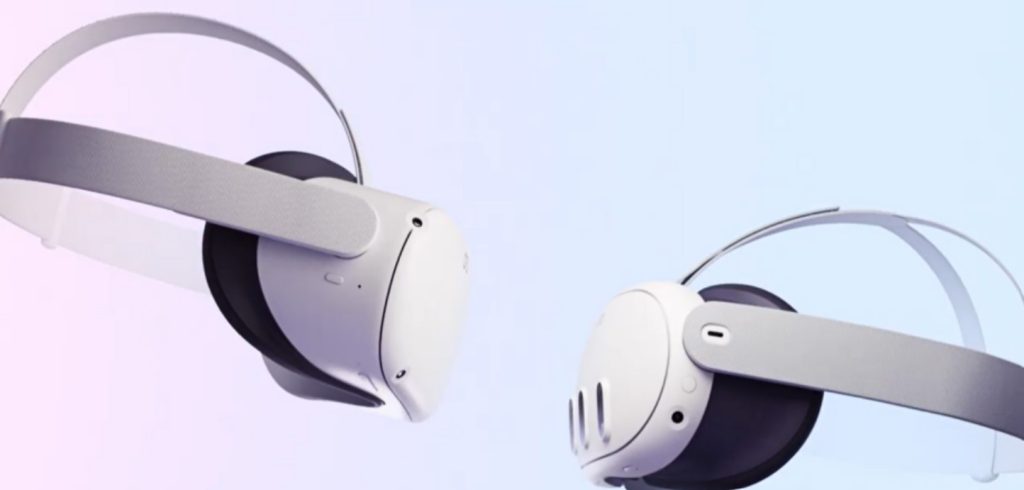
Meta this week unveiled its next virtual reality hardware iteration, Quest 3. Separately, the company opened up about its expectations for the VR / metaverse market and its hopes that the casual sector holds the key to widespread adoption.
Speaking at Gamesbeat Summit, Meta’s Tim Lion (head of gaming marketing, global brand & programs) shared a research paper created alongside Newzoo. The research sought to categorize Meta’s target audience according to their current relationships with games, ranging from shades of hardcore, through to ultra-casuals.
It’s this last group, according to Meta, which currently shows the least knowledge and interest in metaverse gaming, but which has traditionally transformed new modes of gaming (such as mobile, and free-to-play) from niche, to mainstream.
Metaverse knowledge
“At the casual end of the spectrum, we are thinking about a couple of development cycles ahead, to the points of entry that [casual] players are going to expect,” said Lion. He added that casual consumers are aware of the metaverse, but don’t necessarily view it in the same terms as hardcore gamers.
The research found that among casual gamers (i.e. those who played around six hours a week, mainly on mobile) 50 percent said they had “little or no knowledge” of the metaverse, compared to 15 percent of core gamers (i.e. those who play around ten hours a week, across a variety of platforms). 18 percent of casual gamers say they know “at least a fair amount” about the metaverse, compared to 63 percent of core gamers.
Despite a general negativity in gaming media about the term “metaverse,” Meta’s research showed some positive outlook among consumers. Core gamers scored a 67 percent positivity rating on the metaverse, while casuals came in at 25 percent. The numbers, across the board, tracked in between these extremes for two middle groups that Meta characterizes as mid-core generalists, and mid-core enthusiasts.
Meta also asked different groups of consumers what metaverse features they were most excited about, and this returned stark differences between casual and core gamers.
Casual gamers say they are interested in creating and customizing their avatars, as well as broadly social features. Core consumers, perhaps not surprisingly, put their focus on gaming and gaming adjacent activities like 3D streaming and creation tools.
Across all groups, there seems to be a general flatness about crypto (25%) and NFTs (21%) being important to the future development of the metaverse.
Sleeker and futuristic
The company’s Quest 3 headset is coming this fall, with a price tag of $500. The hardware is 40 percent slimmer (not including foam padding) than the Quest 2, which will drop $100 in price to $300. The new device offers a 30 percent improvement in resolution and has a sleeker, more futuristic look than its predecessor. It comes with newly designed controllers.
This comes at a time when pressure is growing on Meta to start delivering on its massive investment in VR and the metaverse. Earlier this year, Meta laid off 10,000 employees, citing a shift in focus as it embraces AI (instead of its Reality Labs metaverse efforts).
Retention of Quest 2 has been identified internally as a problem, while the performance of the company’s own metaverse environment Horizon Worlds has been unimpressive. All this despite massive investment.
Tech blogger Matthew Ball posted this week that “Meta has spent approximately $56B on its Reality Labs division since 2012, and generated about $7B in cumulative revenue over the same period, producing a $49B net loss.”
Meta’s announcement is also widely assumed to be timed to get in front of Apple’s forthcoming unveiling of its augmented reality headset, which can be seen both as a threat to the company’s ambitions and a confirmation that the headset market is more than a chimera.
One of the few positives, as Meta pointed out in its promotional video for Quest 3, is that the platform now has more than 500 VR games and apps available to consumers. Elsewhere, a report came out this week estimating that the global gaming metaverse market size is currently worth $22.7 billion, while projecting and eye-popping $119.2 billion by 2028.
Player expectations
According to Lion, part of Meta’s targeting strategy is to appreciate that different kinds of consumers want different things from VR. “Gamers are not a monolith,” he said. “They are not one thing. They are a broad church with lots of diversity. Many people who play games don’t necessarily identify as gamers.”
Newzoo research director Alexis Pamboris added: “Non-gaming audiences still make up a large proportion of the population, and they are closest to the casual gamer right now. So understanding what they want to get out of [the metaverse] is really important. Eventually there will be a point where the casual gamers say, ‘I know this is coming and I know I’m gonna probably end up getting involved somehow’ and that speaks to the evolution aspect of it too. From a consumer point of view, there’s an acceptance of adoption at some point”
Stephen Gray, senior marketing insights researcher at Meta, also joined the panel. “You need to be thinking about the metaverse consistent with your players’ expectations. You really need to make sure you understand your player base.”
He added that the research “speaks to how the metaverse might evolve naturally,” adding that current trends don’t necessarily inform the future of the metaverse. “We’re thinking about the casual end of the spectrum and how that’s going to lead to mass adoption.”
Colin Campbell has been reporting on the gaming industry for more than three decades, including for Polygon, IGN, The Guardian, Next Generation, and The Economist.
 GameDaily.biz © 2025 | All Rights Reserved.
GameDaily.biz © 2025 | All Rights Reserved.